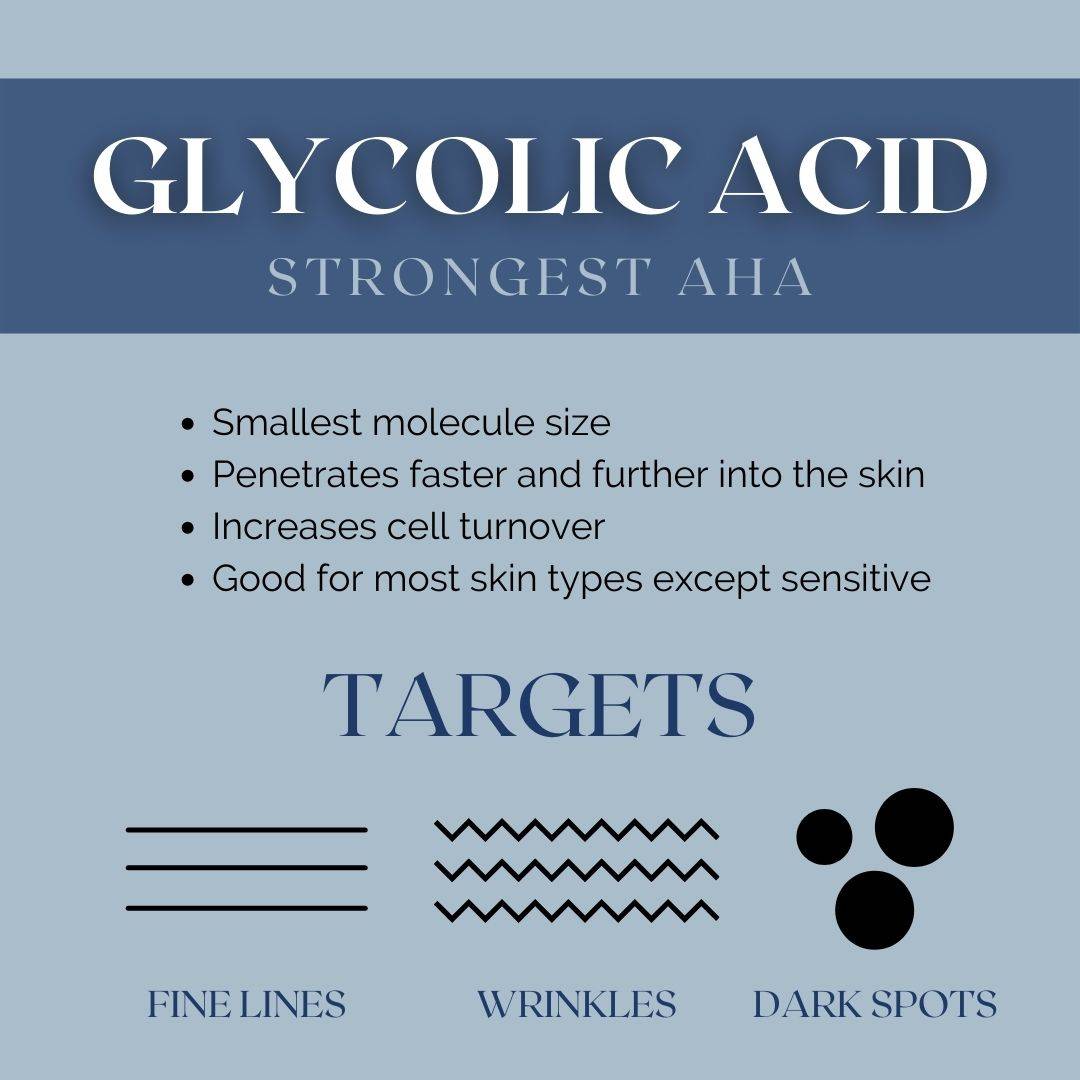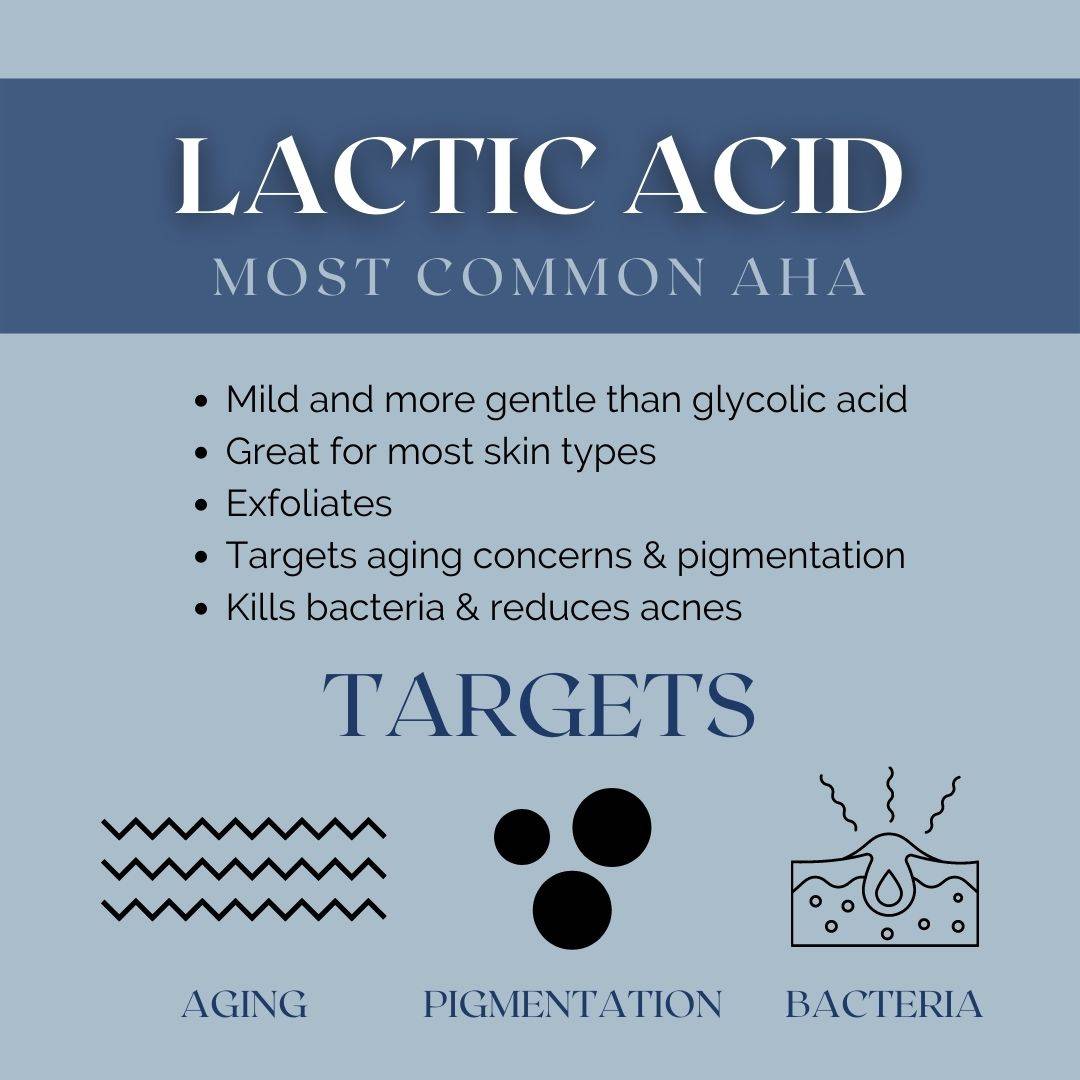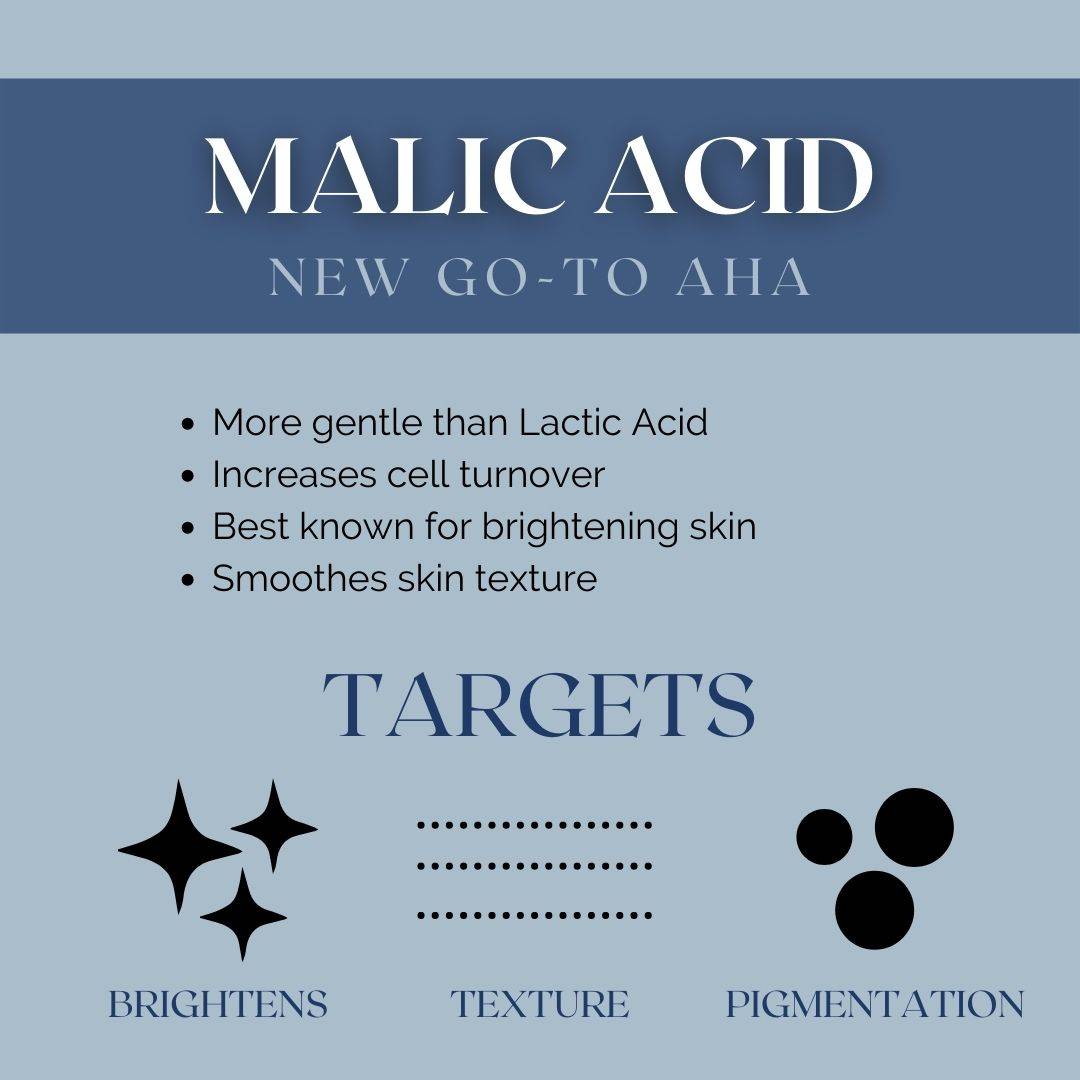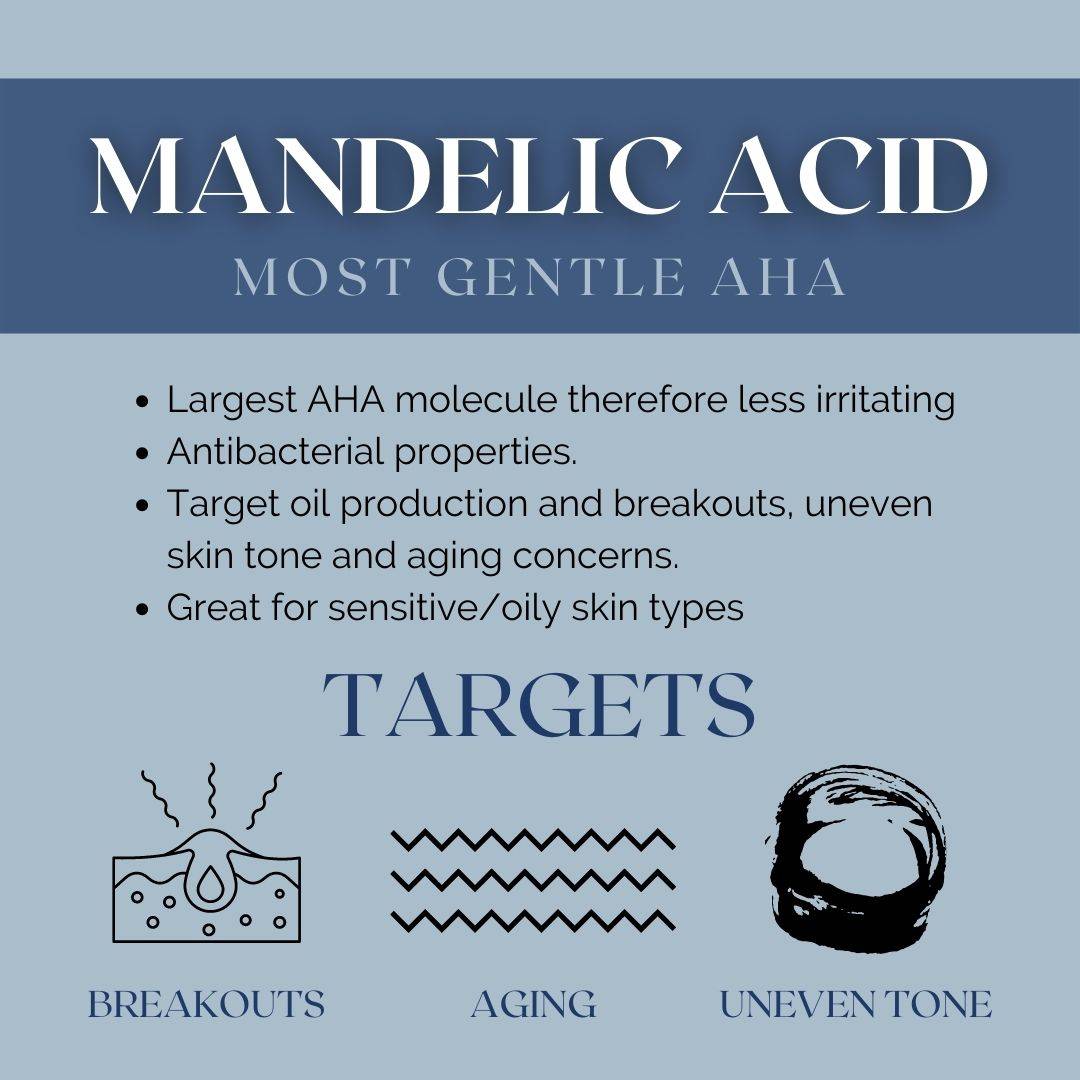ABC's of AHA's
Alpha Hydroxy Acids (aka AHA's) are a grouping of acids that are natural which are derived from different foods. They are water loving acids that hydrate the skin and stimulate collagen production. They can treat a number of skin care concerns including dryness, dullness, aging skin, hyperpigmentation and even breakouts. Lets break down:
GLYCOLIC ACID
Glycolic acid is the strongest AHA. This is because glycolic acid has a very small molecular structure which means that it can penetrate fast and far into the skin. Because it is so strong, I do not recommend using this if you are just starting with skin care because it can be harsher on sensitive skin. It is a good ingredient that can be used daily, however start with using it every other day if it is in your cleanser! If you are using it, and your skin is not ready or you are over using it, your skin could become irritated and sensitive. Glycolic acid is derived from sugar can, making it sustainable.

LACTIC ACID
Lactic acid is a gentler AHA. This is because it has a larger molecular structure than Glycolic acid. This makes it more suitable for sensitive skin types, or for someone who is starting out with skin care. Lactic acid is derived from dairy, therefore people who have a dairy allergy may want to avoid this AHA depending on how severe the allergy is because food allergies don’t always translate to skin.

MALIC ACID
Malic is an AHA which is derived from apples. It has even larger molecules than lactic acid so it penetrates the skin slower. This type of acid is better suited for normal to sensitive skin types. Malic acid and lactic acid are great options for someone who is starting to use acids in their skin care.

MANDELIC ACID
Mandelic acid is an AHA that is derived from bitter almonds. If you are allergic to nuts, you might still be able to use this acid as not all allergies are affected on the skin. Mandelic acid is also antibacterial which makes it a good AHA for oily or breakout prone skin. This is a milder exfoliant therefore it can be used on sensitive skin types.

2 rules to live by when using AHA's
Rule #1: SPF
The most important thing to remember is when using an AHA you need to be using sunscreen as well. AHA’s do make your skin more sensitive to the sun and can increase the risk of sunburn. Because they exfoliate your skin, new skin is reveled underneath. This new skin is more vulnerable to sun damage. You want to use a broad-spectrum sunscreen with a minimum of SPF 30 every morning!
Rule #2: Start Slow
If you are new to AHA’s it might be tempting to use it all the time to get the results you want. But AHA’s are very strong and if they are not gradually introduced to your skin care routine, you can have undesired results. Make sure you are following the instructions on your skin care bottle to ensure proper usage. Also, I recommend using your AHA product a few times a week or every other day to start. If sensitivity occurs than remain at that usage until your skin is ready to use it more often. This is the most effective way to get good and safe results. Also, using an AHA with a larger molecular compound (lactic or malic) instead of a smaller one such as glycolic acid, is a good way to get your skin used to AHA’s.

